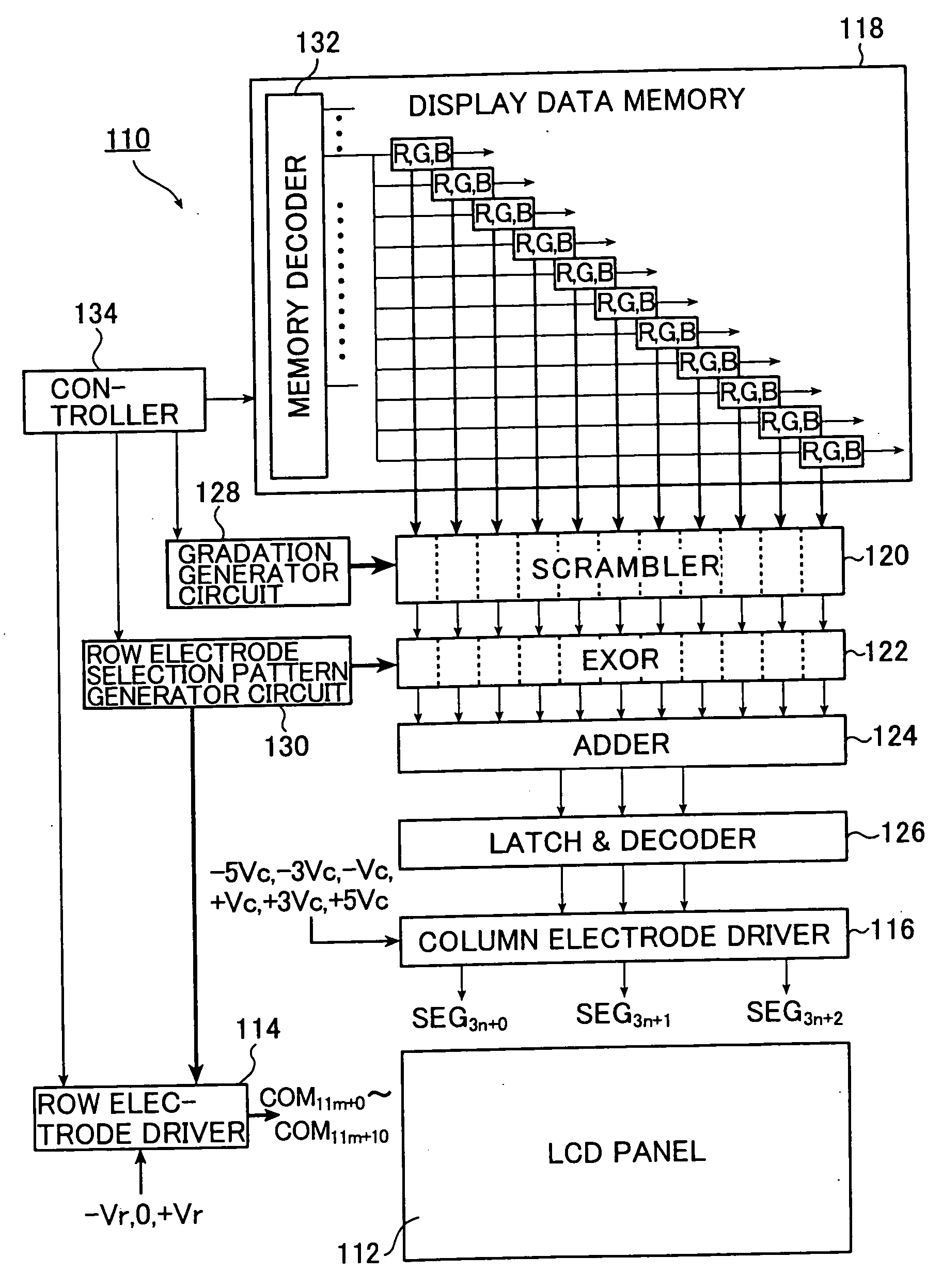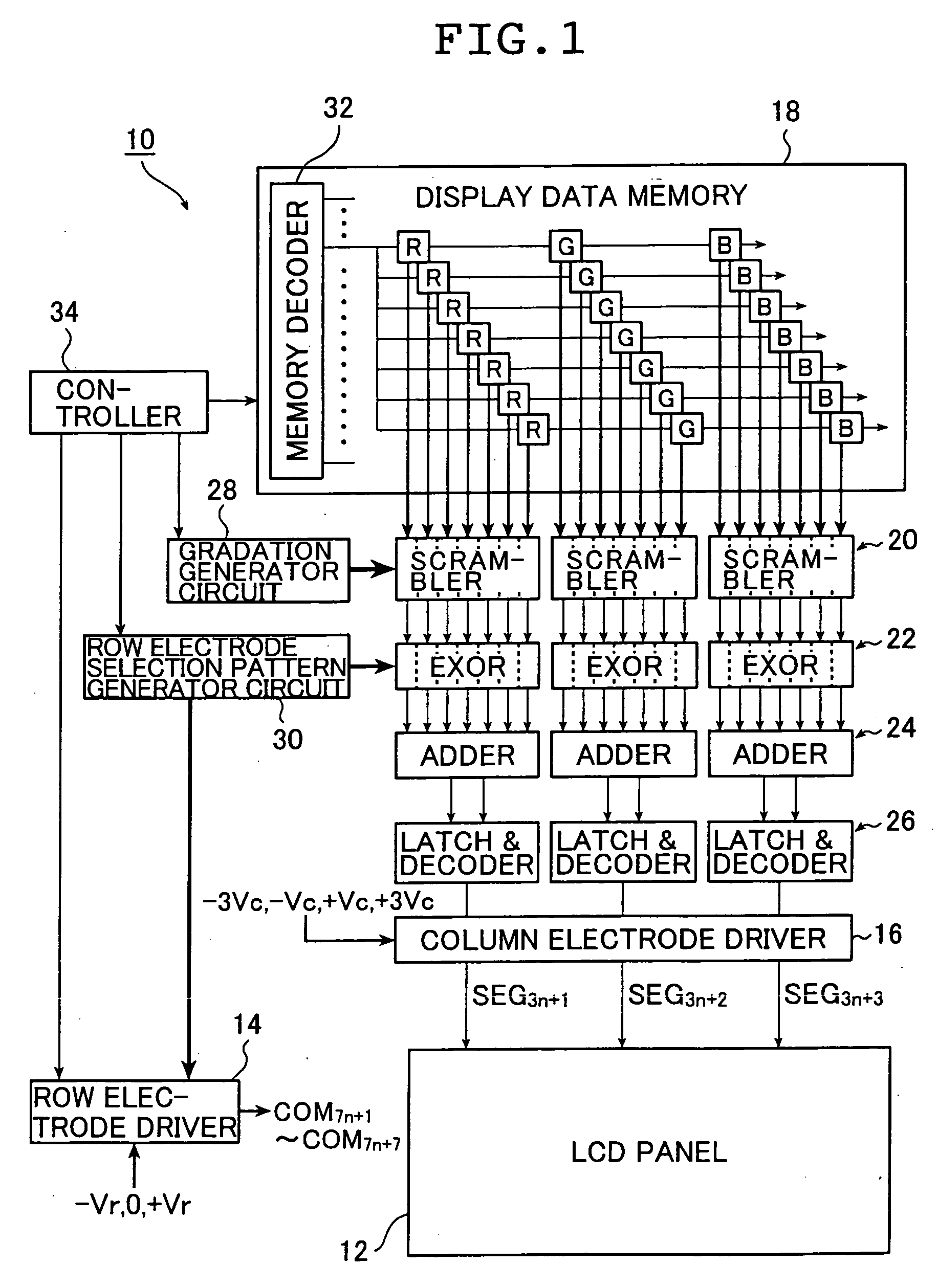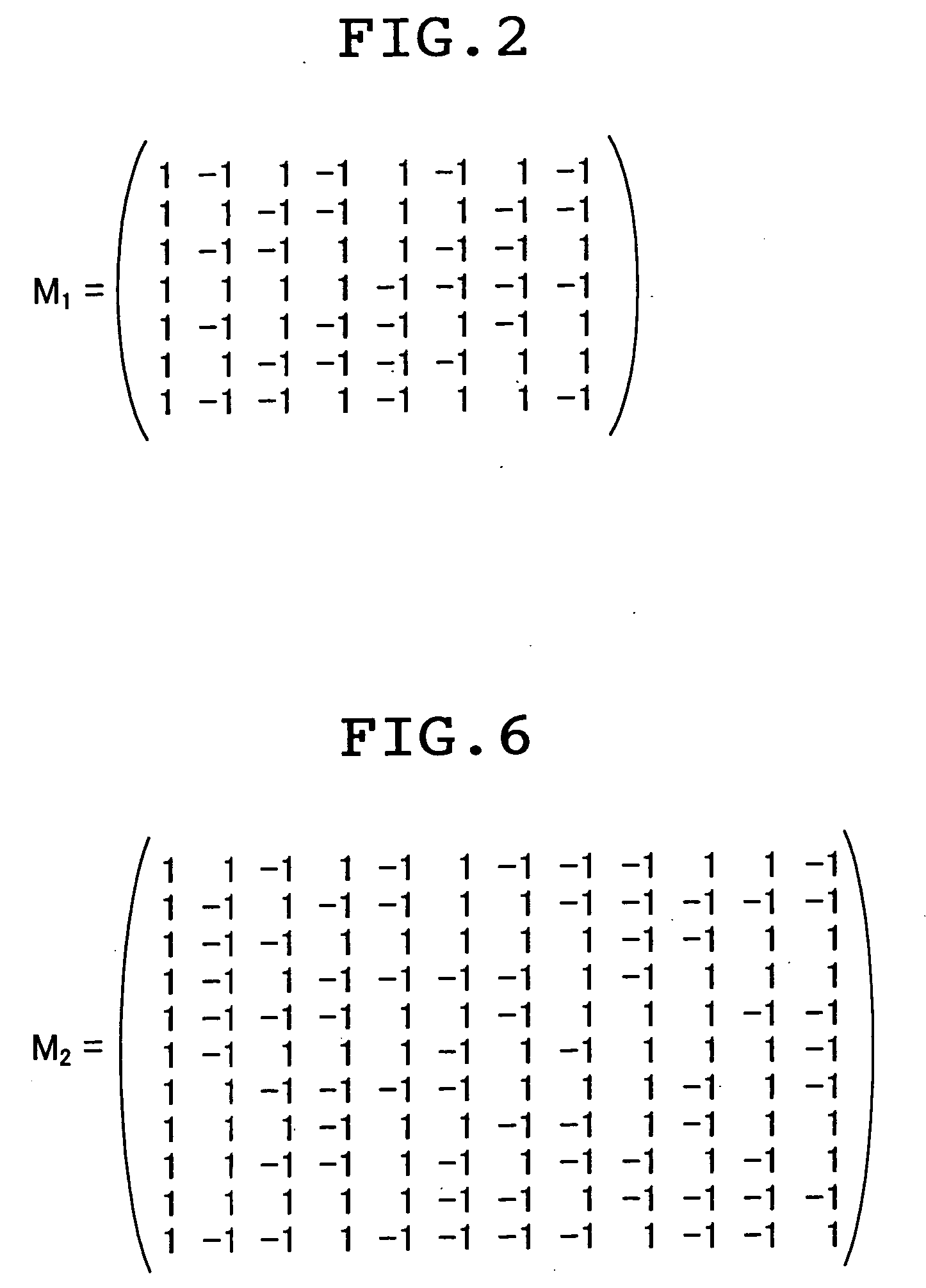Method and apparatus for driving passive matrix liquid crystal
a passive matrix liquid crystal and liquid crystal technology, applied in the direction of instruments, computing, electric digital data processing, etc., can solve the problem of not being able to reduce the selection voltage with l=3, the complexity of the power source circuit is disadvantageous to the size of the driver circuit of the column electrode, and the need to realize the fine-processing with high voltage tolerance, etc. problem, to achieve the effect of low voltage, high contrast display and reduced power consumption
- Summary
- Abstract
- Description
- Claims
- Application Information
AI Technical Summary
Benefits of technology
Problems solved by technology
Method used
Image
Examples
first embodiment
[0094]FIG. 1 is a block diagram showing a circuit configuration of an embodiment (first embodiment) of a liquid crystal driving apparatus (LCD driver) for implementing a multiline addressing drive method for passive matrix liquid crystal according to a first mode of the present invention. The LCD driver according to this embodiment selects 7 row electrodes at a time and sets four voltage levels for the column electrodes. In the present invention, this drive method is referred to as an FLA7 (Four-Level Addressing 7) drive system.
[0095] As shown in FIG. 1, an LCD driver 10 of this embodiment employs the MLA drive system for simultaneously selecting seven rows (COMMON) from row electrodes on an LCD panel 12 and driving the LCD panel at four voltage levels of the column electrodes. The LCD driver includes a row electrode driver 14, a column electrode driver 16 and a display data memory (for example, RAM) 18.
[0096] The LCD driver also includes, for each column (segment) of each color of...
second embodiment
[0146] Next, the first mode of the present invention will be described.
[0147]FIG. 5 is a block diagram showing a circuit configuration of another embodiment (second embodiment) of a liquid crystal driving apparatus (LCD driver) for implementing a multiline addressing drive method for passive matrix liquid crystal according to the present invention. The LCD driver according to this second embodiment simultaneously selects eleven row electrodes and has six voltage levels of the column electrodes. In the present invention, this drive method is referred to as SLA11 (Six-Level Addressing 11). An LCD driver 110 shown in FIG. 5 basically has a structure similar to that of the LCD driver 10 shown in FIG. 1 except that the number of simultaneously selected row electrodes is 11 instead of 7, the number of voltage levels of the column electrodes is 6 instead of 4, and only one scrambler, EXOR, adder and latch and decoder are provided because RGB are respectively processed in time division inst...
PUM
 Login to View More
Login to View More Abstract
Description
Claims
Application Information
 Login to View More
Login to View More - R&D
- Intellectual Property
- Life Sciences
- Materials
- Tech Scout
- Unparalleled Data Quality
- Higher Quality Content
- 60% Fewer Hallucinations
Browse by: Latest US Patents, China's latest patents, Technical Efficacy Thesaurus, Application Domain, Technology Topic, Popular Technical Reports.
© 2025 PatSnap. All rights reserved.Legal|Privacy policy|Modern Slavery Act Transparency Statement|Sitemap|About US| Contact US: help@patsnap.com



